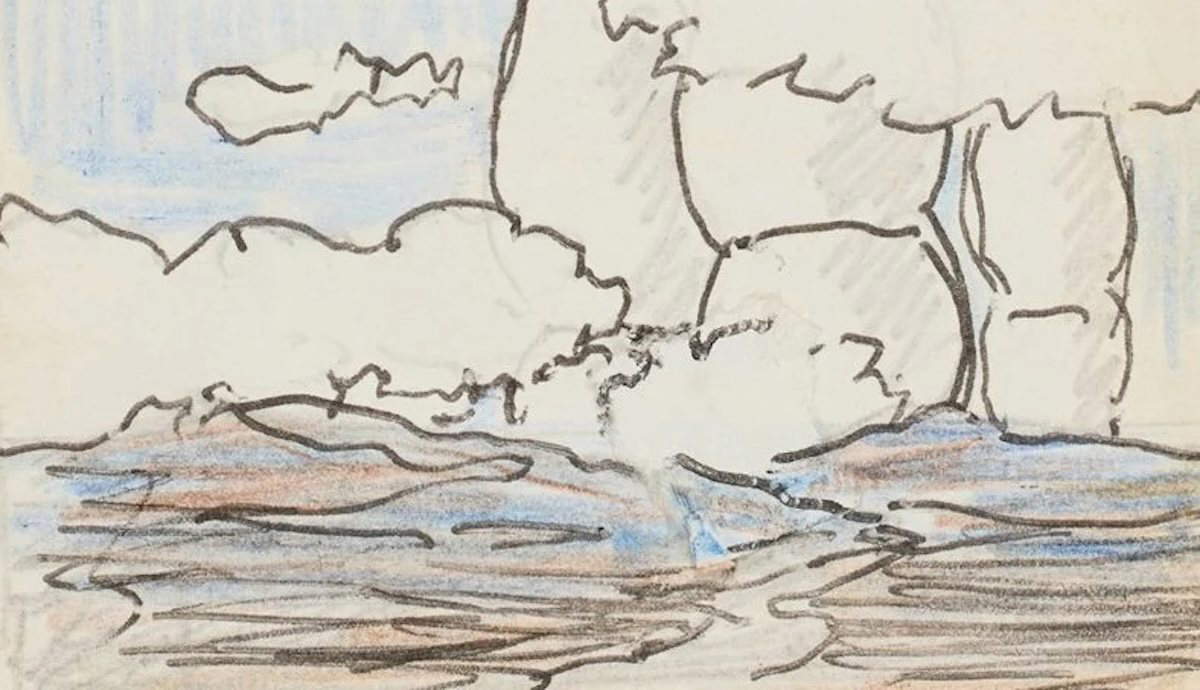
Nearly 2,000 years ago, a library of papyrus scrolls was incinerated in the ancient Roman city of Herculaneum. Now, for the first time, researchers have unfurled the carbonized remains of one such scroll—not physically, but digitally. “It’s an incredible moment in history as librarians, computer scientists, and scholars of the classical period are collaborating to see the unseen,” said Richard Ovenden, head of the Bodleian Libraries at Oxford. “The astonishing strides forward made with imaging and AI are enabling us to look inside scrolls that have not been read for almost 2,000 years.”
Researchers Use AI Technology to Decipher Herculaneum Scroll

During the eruption of Mount Vesuvius in 79 CE, the intense heat of the pyroclastic flows and the sudden depletion of oxygen rapidly carbonized the Herculaneum scrolls into compact blocks. The papyri, which were otherwise unlikely to survive millennia in a Mediterranean climate, were then preserved beneath layers of cement-like rock and ash. The library of scrolls was rediscovered in the 18th century, and researchers have been eager to read them ever since. However, they found it almost impossible to reopen one of the scrolls without completely destroying it—until now.
New advances in artificial intelligence have finally given scientists the tools they need to visualize and decipher the Herculaneum scrolls—without having to unfurl them at all. Researchers used high-resolution X-ray imaging and a machine learning algorithm to make a recent breakthrough on a Herculaneum scroll known as P.Herc. 172. They deciphered an Ancient Greek word for “disgust,” which appears twice within a few columns of text, as well as words for “fear” and “life.” Researchers also determined the Herculaneum scroll is likely a finished book rather than an in-progress scroll.
The Vesuvius Challenge

The project is part of the Vesuvius Challenge, a global competition launched in 2023 by computer scientist Brett Seales. The challenge offers cash prizes to researchers who can help decipher the carbonized Herculaneum scrolls—a tedious and technologically advanced task. Seales is the lead researcher on the team that developed an AI system specifically for this project. The system is powered by a machine-learning algorithm, which was trained to identify ink on the rolled-up papyri.
A team of winning Vesuvius Challenge applicants collaborated with the Bodleian Libraries at Oxford University, which holds the Herculaneum scrolls, to refine the imaging and deciphering process. They used Diamond Light Source, a synchrotron science facility in Oxfordshire, to create a high-resolution X-ray image of Herculaneum scroll P.Herc. 172. “We are thrilled with the successful imaging of this scroll from the Bodleian Libraries,” said Seales. “This scroll contains more recoverable text than we have ever seen in a scanned Herculaneum scroll.”
The History of the Herculaneum Scrolls

In the 18th century, workmen came upon over 1,800 ancient papyrus scrolls in the ruins of Herculaneum. The carbonized scrolls once belonged to a library in a grand villa, now known as the Villa of the Papyri. The Herculaneum scrolls, which contain Greek philosophical texts, comprise the only surviving library from antiquity that exists in its entirety. Prior to their discovery, the oldest known papyri dated back to the Middle Ages. Like many of the Herculaneum scrolls, Scroll P.Herc. 172 is thought to have been penned by Philodemus, the Epicurean philosopher and poet. It was donated to Oxford University in the 19th century by Ferdinand IV, king of Naples and Sicily. Compared to the other scrolls, its ink is denser and thus more visible in X-ray imagery.









